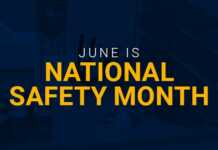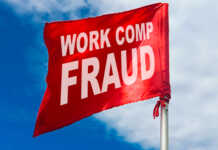The first three installments of our workplace Accident Investigation Series covered why employers need to investigate, how to investigate, and how to write the mishap report. During the investigation follow-up, we need to determine if the factor that led to the mishap was an unsafe workplace condition, an unsafe act by an employee, or both. My personal view on this question is like the other unanswerable question, “What came first, the chicken or the egg?”
Experienced safety managers know that 80% of workplace mishaps can be considered human error. Behind every mishap, there will be a reason (not an excuse) due to an unsafe act by an employee or an unsafe condition that was not identified.
- Unsafe Conditions can be defined as workplace environment risks to workers that may or may not have been identified, such as biological, chemical, electrical, environmental, mechanical, and physical conditions.
- Unsafe Acts can be defined as an employee ignoring the prescribed safety standards or company policies.
What about the weather?
Are mishaps involving weather (rain, snow, lightning, heat, and wind) considered excusable or, as some put it, “Acts of God?” Mishaps that happen in weather conditions tend to be overlooked without a change in procedure or policy. Why did the scaffolding blow over in the wind? Why did the groundskeeper get struck by lightning while mowing the fifth green? Company policies and work limitations need to be put in place even though you may believe common sense should prevail when it comes to your employees working in the weather. A quote I use often is, “Common sense is a flower that does not grow in everyone’s garden.” Weather can cause an unsafe work condition; however, unsafe acts can be prevented by providing guidance on controlling the workers’ actions during bad weather.
Unsafe act or unsafe work condition – Which is it?
During my investigations, I have found an unsafe act may contribute towards an unsafe condition. Let me elaborate.
During a monthly inspection, the supervisor chose to ignore a leaking roof in the production facility. Would his lack of attention to this unsafe condition be considered an unsafe act? If, subsequently, one of his employees fell while pushing a pallet jack on a rain-soaked wet floor (compliments of the leaking roof), would it be considered an unsafe workplace condition?
While unsafe risk conditions can be easily identified and corrected using methods such as a Job Hazard Analysis, inspections, and Risk Assessments (see Figure 1), how can we identify and control the risks for employee unsafe acts? After all, they are only human.

Let us take a deeper dive into why humans find themselves performing an unsafe act either at home or at work. Again, these are not excuses. They are behaviors that many of us find ourselves doing…daily! To show examples of conscious or subconscious unsafe acts that can lead to a mishap injury, I will use myself as an example.
- Due to the traffic caused by the rain, I am late for a meeting, so I find myself speeding on the wet roads.
- The 4’ ladder I chose and carried to the second floor was too short for me to reach the ceiling fixture light bulbs, so I stood on the last step instead of getting the 6’ ladder out of the garage.
- After troubleshooting an intermittent circuit, I was complacent when I failed to open the breaker to change a faulty electric outlet.
- My safety goggles fog up my prescription glasses, so I just wear my glasses to see what I am sanding.
- The guard on my chop saw catches on the wood, so I use a wire to hold the guard out of the way.
- Our certified forklift operator was out sick, so I decided to help by loading the delivery truck using his forklift.
- Bored, I placed a plastic cup of water on top of my coworker’s door for entertainment.
Sound familiar? Do you see these human behaviors at work or even in yourselves? If during the investigation of a workplace mishap, you determined the contributing factor is an unsafe act by one of the employees, what can you recommend to prevent a similar mishap? I will cover “Recommendations” in Part V of the Accident Investigation blog series. However, I would like to share a few ways to mentor your employees from doing unsafe actions or creating unsafe conditions.
Recognize SAFE BEHAVIORS! Compliment the worker or department that corrects unsafe conditions that will prevent unsafe acts, such as replacing an old unserviceable step ladder with a new one.
Mentor employees who are high-risk. If an unsafe act is witnessed, pull that worker aside in private for a discussion. Do not yell at an employee. Ensure the employee is aware that the act they performed could cause an injury to themselves or others, as well as damage equipment. I recommend employers utilize high-risk employees on their safety team. My minister told me years ago, “You gotta recognize a sin before you can preach against sin.” The same goes for safety and high-risk employees. They will recognize and hopefully help prevent unsafe behaviors in others since they too are high-risk.
Repeat offender? Discipline should be handled by an experienced supervisor or HR person, not the safety manager. Your company’s Injury & Illness Prevention Program should have a chapter covering safety compliance. Oral warning, written warning, suspension, and termination are all tools for employers to use to ensure compliance with company safety policies as well as that of OSHA and other regulatory agencies.
For example, if you have a forklift operator who is warned daily of unsafe acts while operating (no seatbelt, load causing blocked vision, speeding, etc.), try suspending his forklift operator certificate. A three-day suspended forklift operator certificate equals a three-day work suspension (without pay). That should get the operator’s attention as well as highlight your commitment to a safe work environment.
Again, remember, “Do not judge!” I come from the school of “all mishaps are preventable” by controlling unsafe conditions and preventing unsafe acts.

















